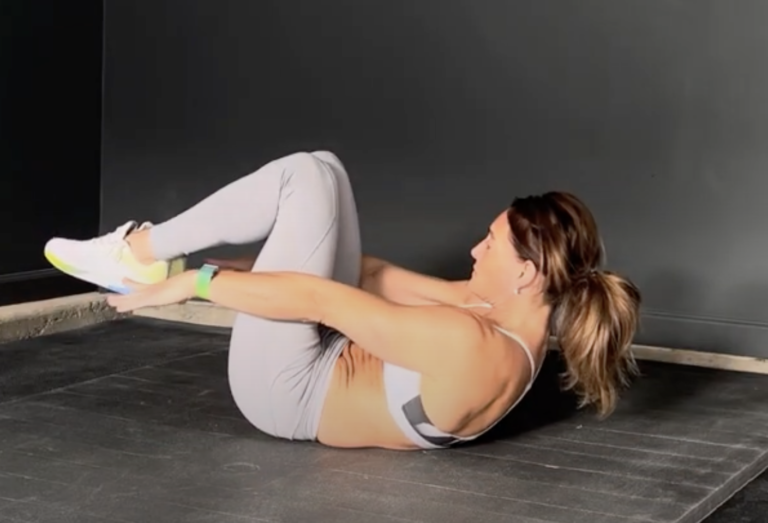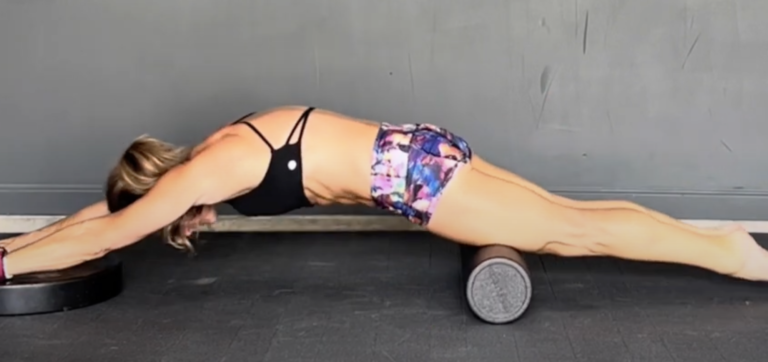This article is the final and eighth in our series with gymnastics athlete and coach Pamela Gagnon. We’ve had kipping pull-ups, toes-to-bar, handstand push-ups, bar muscle-ups, handstand walking, ring muscle-ups, and butterfly pull-ups. Today, we end this series with your action plan for leveling up your gymnastics skills over the next few months.
When toes-to-bars show up in a workout, how often have you said, “I need to work on that more.”
When handstand push-ups show up in a workout, how often have you said, “I need to work on that more.”
And so on. It seems like there are so many gymnastics skills in CrossFit and so much to work on that it gets too overwhelming; we do nothing and just cross our fingers the next time a high skill comes up in a workout.
How can you work on gymnastics skills so you can move toward going as prescribed on your workouts without it seeming so overwhelming?
WHERE TO BEGIN?
Let’s relate this question to the clean and jerk. When you began CrossFit, how did you learn the lifting portion? The coach probably handed you a PVC pipe and you began one position at a time. The shrug, the shrug and pull, the muscle clean, and so on. You learned the fundamentals, breaking down positions within a full skill, and understanding movement and technique before loading the barbell.
You can apply the same principle to gymnastics. The foundation for body-weight skills is the same, whether you are doing handstand push-ups or kipping pull-ups. We learn skills by mastering shapes, tension, flexibility, and strength.
Let’s take a look deeper into these four foundational key components.
KEY FOUNDATION 1 – GYMNASTICS SHAPES
 The two foundational shapes in gymnastics are the hollow and arch. The hollow is a global flexion where you tuck the pelvis slightly and pull your ribs toward your belly button, which creates tight abs and glutes and stabilizes your trunk to create tension.
The two foundational shapes in gymnastics are the hollow and arch. The hollow is a global flexion where you tuck the pelvis slightly and pull your ribs toward your belly button, which creates tight abs and glutes and stabilizes your trunk to create tension.
The opposite of the hollow is the arch, a global extension that provides tension through the thoracic spine, glutes, and hamstrings.
The arch and hollow work together, as equal and opposite reactions, to create a lot of power in kipping, stability when inverted, and strength to move your body through space. The arch and hollow can help you understand how to create stability and power from core to extremity and also how to find tension in your body while moving through space.
KEY FOUNDATION 2- TENSION AND WHY YOU NEED IT
Tension is simply muscles doing work. While the definition may seem simple, being able to execute tension during skills can be very challenging. To understand how to create tension, you need to connect your brain to your body. You do this through practice, which is simply repetition.
 To successfully build tension, it’s best to master holds before adding dynamic movement. For example, you would master tension in the arch and hollow on the floor before learning the kip swing. If you have a fault in the static hollow or arch, you will certainly see a fault in the kip swing.
To successfully build tension, it’s best to master holds before adding dynamic movement. For example, you would master tension in the arch and hollow on the floor before learning the kip swing. If you have a fault in the static hollow or arch, you will certainly see a fault in the kip swing.
So why do we NEED tension? Think about the barbell. What if you performed an overhead squat and your arms started to bend? You’d lose tension in your body and it may feel like the barbell would collapse on top of you.
When you lose tension in your body, it doesn’t feel like a safe or powerful lifting position. The same applies as your body moves through space. What happens when you kick up to a handstand and your arms bend? It feels scary and like you might collapse on your head. But if you had sturdy arms and strong upper-back muscles to support you in your handstand, you would feel in control and safe. Tension is KEY!
KEY FOUNDATION 3 – FLEXIBILITY
Flexibility is simple; if you can’t get into the position, the skill will be much harder. It’s not to say you can’t perform handstand walking without mobile shoulders, but to compensate for lack of shoulder mobility, you will have to over-arch to balance. This will cause stress in your lower back, it will cause you to work harder, instead of smarter, and it skips over the foundation of all handstands, which is the ability to stack your skeletal system for balance. Therefore, flexibility is a crucial part of a skill.
KEY FOUNDATION 4 – STRENGTH IS KING
Strict strength is crucial before adding a dynamic movement. When working on a squat snatch, you make sure you can overhead squat the weight before you catch it in a more dynamic skill. In gymnastics, strength is key to building skills properly and safely. When you add kipping to your skills, you are adding approximately three to five times your body weight. If you don’t have strict strength behind a kipping skill, you won’t be able to control the power coming through your skill, and this puts your ligaments under stress. This can be where kipping gets a bad rap, those who are performing it before laying the strength foundation.
Practice
Success in the gymnastics portion of CrossFit requires regular practice, not just attempts during the workout. Therefore, doing drills and warm-ups outside class will help you feel even more prepared the next time pull-ups appear in the workout. Going forward, set aside 10 minutes to work on positional work, which includes shapes and mobility, and work on strength by adding strict work, as well.
Do these movements three times a week for the next three weeks.
Day 1
3 rounds, 3 rounds of each skill below, accumulate 30 seconds of work each round of:
Day 2
Accumulate 2 minutes of practice:
Day 3
3 rounds, work 40 seconds, rest 20 seconds:
- Hollow static pike-up sliders
- Strict pull-up or toe-assist pull-up
- Ring support tuck-ups or box support Holds
Drills and Warm-Ups
A few quality drills and warm-ups include:
Finding a gymnastics conditioning program can be a good start to your journey. CrossFit is offering a new in-person course on gymnastics in Salt Lake City, Utah, this June, too!
About the Author

Pamela Gagnon is the co-creator of Performance Plus Programming and can help you get your first ring muscle-up in less than five weeks. She is a four-time Masters CrossFit Games athlete and a former D1 Gymnast. As a CF-L2, she was a lead coach for eight years with the CrossFit Gymnastics Course. She also currently writes gymnastics programming for CrossFit Mayhem.
Mastering CrossFit Gymnastics: How to Build Strength, Stability, and Confidence